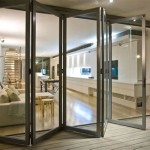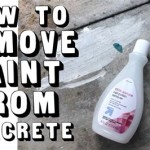Should You Cover Patio Furniture in the Winter?
The question of whether to cover patio furniture during the winter months is a common one for homeowners in regions experiencing seasonal changes. The decision involves weighing several factors, including the type of furniture materials, the severity of the winter weather, the storage space available, and the amount of time and effort one is willing to invest in furniture maintenance. Leaving patio furniture exposed to the elements throughout winter can lead to various forms of damage, while covering it presents its own set of considerations. This article will delve into the pros and cons of covering patio furniture during winter, examining the implications for different furniture materials and offering guidance on making an informed decision.
Winters often bring a combination of harsh weather conditions that can directly impact outdoor furniture. Snow, ice, freezing rain, and fluctuating temperatures can all contribute to the deterioration of certain materials. Prolonged exposure to moisture can lead to rust, mold, mildew, and cracking, especially on furniture made from metal, wood, or fabric. The ultraviolet (UV) rays from the sun, even during winter, can fade colors and weaken the structural integrity of some plastics. Furthermore, strong winds can blow lightweight furniture around, causing damage to the furniture itself or to surrounding structures and landscaping. The cumulative effect of these winter elements can significantly shorten the lifespan of patio furniture and necessitate more frequent repairs or replacements.
Understanding the Impact of Weather on Different Furniture Materials
The type of material your patio furniture is made from significantly influences how it will withstand winter weather and whether covering it is necessary. Different materials react differently to moisture, temperature fluctuations, and UV exposure.
Wood: Wooden patio furniture, particularly if it's made from hardwoods like teak or acacia, is generally durable and resistant to weather. However, prolonged exposure to moisture can cause wood to expand and contract, leading to cracks, warping, and rot. Softwoods like pine are even more susceptible to water damage. Covering wooden furniture during the winter can help minimize these effects, especially in areas with heavy snow or rain. Before covering wooden furniture, it's advisable to clean it thoroughly and apply a fresh coat of sealant or stain to provide an extra layer of protection against moisture penetration.
Metal: Metal furniture, including aluminum, wrought iron, and steel, is susceptible to rust and corrosion. Aluminum is generally rust-resistant, but prolonged exposure to moisture can still lead to oxidation, causing a chalky white residue to form on the surface. Wrought iron and steel are prone to rust, which can weaken the structure and detract from the appearance of the furniture. Covering metal furniture can shield it from rain and snow, reducing the risk of rust. It's also beneficial to apply a protective coating of rust-resistant paint or sealant before covering it.
Plastic and Resin: Plastic and resin furniture are generally more resistant to water damage than wood or metal. However, prolonged exposure to UV rays can cause these materials to fade, become brittle, and crack. Covering plastic and resin furniture can help protect it from UV damage and extend its lifespan. It's important to choose a cover that is breathable to prevent moisture buildup underneath, which can lead to mold or mildew growth.
Wicker: Natural wicker furniture is made from plant fibers and is particularly vulnerable to moisture damage. It can absorb water easily, leading to mold, mildew, and rot. Covering natural wicker furniture is crucial to protect it from the elements during the winter months. Synthetic wicker, made from resin or plastic, is more water-resistant, but it can still be damaged by UV rays and extreme temperatures. Covering synthetic wicker furniture provides an added layer of protection and helps maintain its appearance.
Upholstery and Fabric: Cushions and other upholstered parts of patio furniture are susceptible to mold, mildew, and fading. It's best to store cushions indoors during the winter months. If indoor storage is not possible, covering the furniture with a waterproof cover is recommended. However, it's important to ensure that the cover is breathable to prevent moisture buildup. Consider using moisture-absorbing packets inside the cover to further reduce the risk of mold and mildew growth.
The Benefits of Covering Patio Furniture
Covering patio furniture during the winter offers several advantages that can help protect your investment and extend the lifespan of your outdoor pieces.
Protection from the Elements: The primary benefit of covering patio furniture is the protection it provides from the harsh winter elements. A good quality cover will shield furniture from snow, rain, ice, wind, and UV rays. This protection can prevent water damage, rust, fading, cracking, and other forms of deterioration. By minimizing exposure to these elements, you can significantly reduce the need for repairs and replacements.
Prevention of Mold and Mildew: Moisture buildup is a significant concern for outdoor furniture during the winter months. Covers can help prevent moisture from accumulating on the furniture, reducing the risk of mold and mildew growth. Mold and mildew can not only damage the furniture but also pose health risks. Choosing breathable covers and ensuring proper ventilation can further minimize the risk of moisture-related problems.
Reduced Maintenance: Covering patio furniture can significantly reduce the amount of maintenance required in the spring. When furniture is left uncovered, it can accumulate dirt, debris, and stains that require thorough cleaning. Covering the furniture keeps it clean and protected, making it ready for use as soon as the weather warms up. This can save time and effort in the spring, allowing you to enjoy your outdoor space sooner.
Extended Lifespan: By protecting patio furniture from the elements, covering it can significantly extend its lifespan. Reducing exposure to moisture, UV rays, and temperature fluctuations can prevent premature wear and tear, saving you money in the long run. Investing in good quality covers is a worthwhile investment that can pay for itself over time by prolonging the life of your patio furniture.
Considerations for Choosing and Using Patio Furniture Covers
Selecting the right patio furniture covers and using them properly is crucial to ensuring they provide effective protection. Several factors should be considered when choosing covers, including the material, size, fit, and breathability.
Material: Patio furniture covers are available in a variety of materials, including polyester, vinyl, and canvas. Polyester covers are lightweight, water-resistant, and relatively inexpensive. Vinyl covers are waterproof but can be less breathable, potentially leading to moisture buildup. Canvas covers are durable and breathable but can be more expensive. The best material will depend on the specific needs of your furniture and the climate in your area.
Size and Fit: It's essential to choose covers that are the right size for your furniture. Covers that are too small will not provide adequate protection, while covers that are too large can trap moisture and allow wind to blow them off. Measure your furniture carefully and select covers that fit snugly but not too tightly. Some covers come with adjustable straps or drawstrings to ensure a secure fit.
Breathability: Breathability is a critical factor to consider when choosing patio furniture covers. Covers that are not breathable can trap moisture, leading to mold and mildew growth. Look for covers that are made from breathable materials or that have vents to allow air circulation. This will help prevent moisture buildup and keep your furniture dry and protected.
Proper Installation and Maintenance: Simply buying the right covers is not enough; they must be installed and maintained properly. Ensure that the covers are securely fastened to the furniture to prevent them from being blown off by the wind. Periodically check the covers for tears or damage and repair them promptly. Clean the covers regularly to remove dirt and debris. Storing the covers properly when not in use will also help extend their lifespan.
Ultimately, deciding whether to cover patio furniture in the winter is a decision best made by weighing personal circumstance with the advice given. Considering your furniture type and local climate will help make the best decision to protect your investment.

How To Cover Outdoor Furniture For Winter Rst Brands

How To Ensure Your Outdoor Furniture Survives The Winter Reviewed

How Long Does Patio Furniture Last Patioworld

Covering Your Patio Furniture For Winter Weather

Storing Furniture During Winter Living Outdoors

What To Do With Outdoor Furniture In The Winter Family Handyman

Can I Leave Patio Furniture Outside In Winter Rattanyard

Can I Leave Rattan Furniture Outside In Winter

How To Use Outdoor Furniture In Winter

Can You Leave Rattan Furniture Outside In Winter Tips Double No Ice
Related Posts








